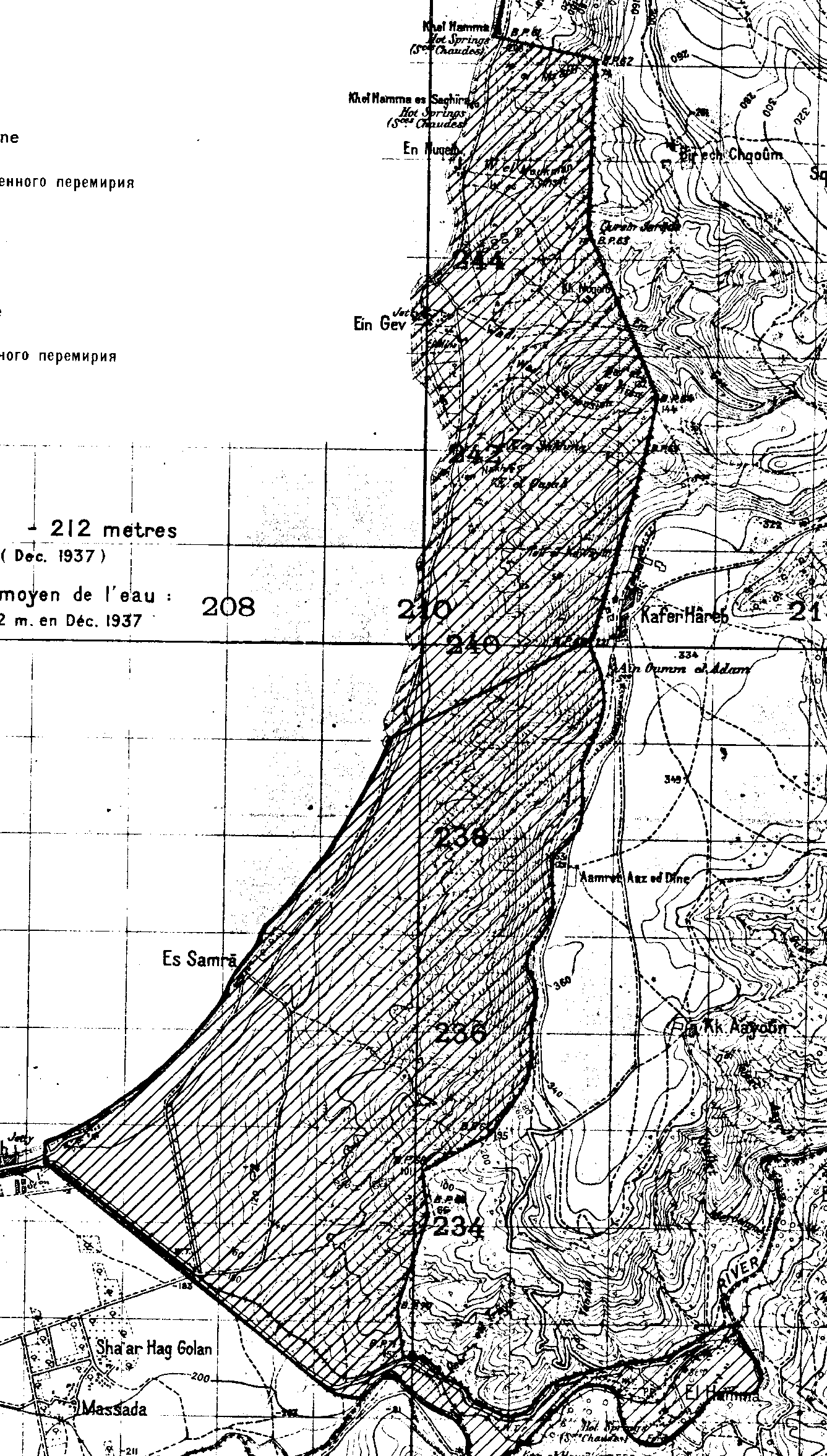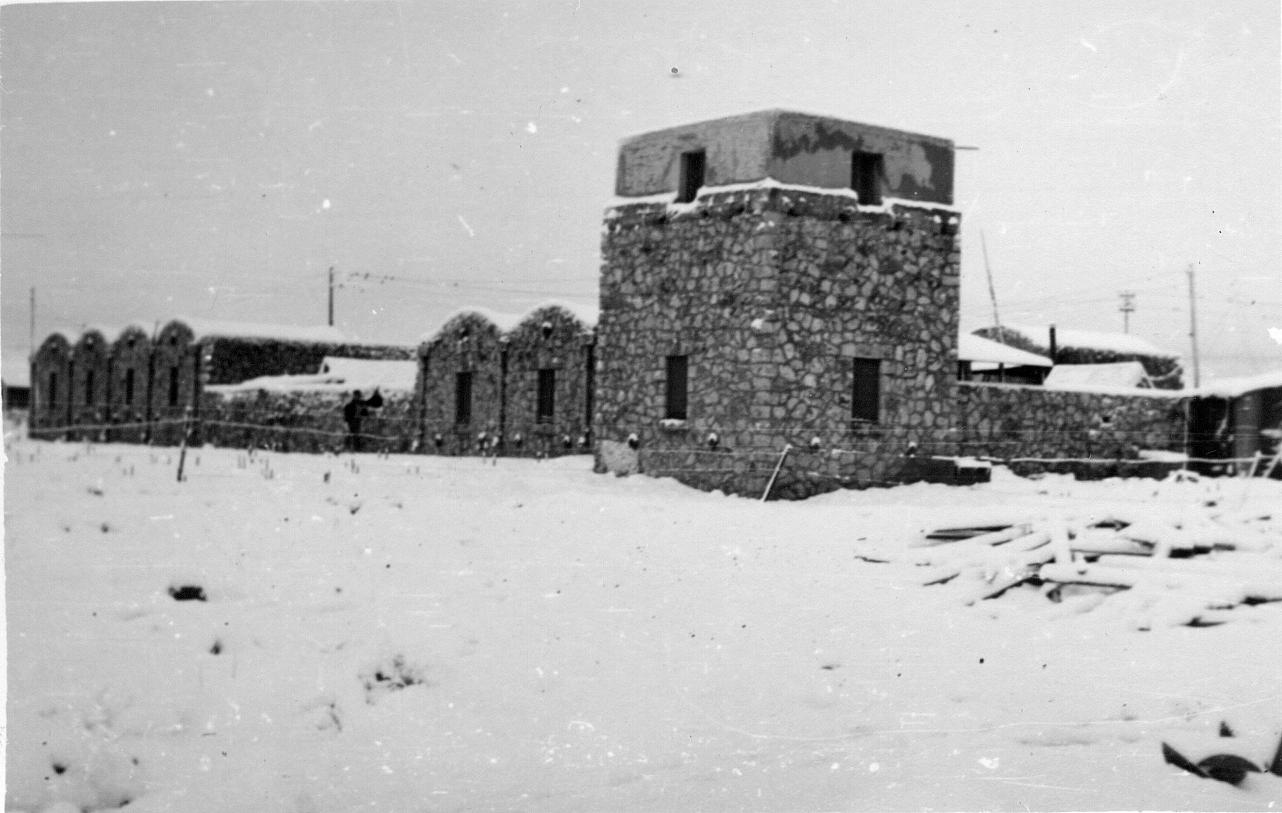|
Emek HaYarden Regional Council
Emek HaYarden Regional Council ( he, מועצה אזורית עמק הירדן, ''Mo'atza Azorit 'Emeq HaYarden'', ''lit.'' Jordan Valley Regional Council) is a regional council comprising much of the western shore of the Sea of Galilee, the southern parts of its eastern shore, and the northern part of the Jordan Valley all the way to Beit She'an in the south. History Emek HaYarden Regional Council was the first regional council in Israel, established in 1949. In Israel the northern part of the Jordan Valley is called Emeq HaYarden and was part of Israel before the 1967 Six-Day War; the southern part is called Bik'at HaYarden, which gives the name to a separate regional council and was captured by Israel in 1967. The two Hebrew words ''emek'' and ''bik'a'' are practically synonymous, both "Emeq HaYarden" and "Bik'at HaYarden" meaning "Jordan Valley"; the distinction is only administrative and political. Most of the settlements are of the kibbutz type and are located on Highwa ... [...More Info...] [...Related Items...] OR: [Wikipedia] [Google] [Baidu] |
Regional Council (Israel)
Regional councils (plural: he, מוֹעָצוֹת אֵזוֹרִיּוֹת, ''Mo'atzot Ezoriyot''https://milog.co.il/מוֹעָצוֹת_אֵזוֹרִיּוֹת / singular: he, מוֹעָצָה אֵזוֹרִית, ''Mo'atza Ezorit'') are one of the three types of Israel's local government entities, with the other two being Municipality (Israel), cities and Local council (Israel), local councils. As of 2019, there were 54 regional councils, usually responsible for governing a number of settlements spread across rural areas. Regional councils include representation of anywhere between 3 and 54 communities, usually spread over a relatively large area within geographical vicinity of each other. Each community within a regional council usually does not exceed 2,000 in population and is managed by a Local committee (Israel), local committee. This committee sends representatives to the administering regional council proportionate to their size of membership and according to an index w ... [...More Info...] [...Related Items...] OR: [Wikipedia] [Google] [Baidu] |
Ashdot Ya'akov Ihud
Ashdot Ya'akov Ihud ( he, אַשְׁדוֹת יַעֲקֹב אִחוּד) is a kibbutz in northern Israel. Located to the south of the Sea of Galilee near the Jordanian border and covering 4,200 dunams, it falls under the jurisdiction of Emek HaYarden Regional Council. In it had a population of . History The kibbutz was established in 1953 by members of Ihud HaKvutzot VeHaKibbutzim as a result of a split in the original kibbutz of Ashdot Ya'akov (members of HaKibbutz HaMeuhad established Ashdot Ya'akov Meuhad Ashdot Ya'akov Meuhad ( he, אַשְׁדוֹת יַעֲקֹב מְאֻחָד) is a kibbutz in northern Israel. Located to the south of the Sea of Galilee near the Jordanian border and covering 4,300 dunams, it falls under the jurisdiction of Emek H ...). References {{Authority control Kibbutzim Kibbutz Movement Populated places established in 1953 Populated places in Northern District (Israel) ... [...More Info...] [...Related Items...] OR: [Wikipedia] [Google] [Baidu] |
HaOn
HaOn ( he, הָאוֹן, lit. "The Power") is a community settlement on the shore of the Sea of Galilee in northern Israel. Located at the foot of the Golan Heights about a twenty-minute drive from the city of Tiberias, it is part of Emek HaYarden Regional Council. HaOn formerly operated as a kibbutz belonging to the United Kibbutz Movement. In it had a population of . History The community was established in August 1949 as Nahal outpost near Ein Gev and moved to the permanent location on the site of the depopulated Palestinian village of As-Samra in October of that year. The founders of the kibbutz were 120 members of two groups: the Nacham group of Polish immigrants who arrived in Eretz Israel in 1947 and underwent training in Kvutzat Kinneret and a group of immigrants from the Habonim movement in Hungary who immigrated through camps in Cyprus and were trained in Kfar Giladi. A Turkish youth group joined the kibbutz three months after their aliya. Over the years until the ... [...More Info...] [...Related Items...] OR: [Wikipedia] [Google] [Baidu] |
Tel Katzir
Tel Katzir ( he, תֵּל קָצִיר, lit. "Harvest Hill") is a kibbutz in northern Israel. Located to the south of the Sea of Galilee, it falls under the jurisdiction of Emek HaYarden Regional Council. In it had a population of . History The village was founded in 1949 by a gar'in of Hebrew Scouts and a kvutza of youths from kibbutz Afikim. There is a small museum in the kibbutz about its history and the period between 1948 and 1967. Israel Places Its name was adapted from the Arabic name for the area, Tell al-Qasr, and also symbolises agriculture. Prime Minister refused to accept the name, insisting that it should be called Beit Katzir because it was not a real [...More Info...] [...Related Items...] OR: [Wikipedia] [Google] [Baidu] |
Ravid
Ravid ( he, רָבִיד, lit. "Necklace") is a small kibbutz in northern Israel. Located to the west of the Sea of Galilee, it falls under the jurisdiction of Emek HaYarden Regional Council. In it had a population of . History Ravid was established in 1981 by members of the Takam movement as part of the Galilee lookouts programme, including 10 families who had moved from cities. The site was land that had belonged to the depopulated Palestinian village of al-Mansura until the 1948 Arab–Israeli War, southeast of the village site. However, after a social crisis, the kibbutz was dismantled. It was successfully re-established in 1994 by former members of HaNoar HaOved VeHaLomed, and is now part of the Dror-Israel Dror-Israel ( he, דרור-ישראל) is a pioneering educational movement whose mission is to effect meaningful, long-term educational and social change in Israeli society in order to promote solidarity, social activism, democracy and equality ... movement. Ref ... [...More Info...] [...Related Items...] OR: [Wikipedia] [Google] [Baidu] |
Ma'agan
Ma'agan ( he, מַעֲגָן, lit. "Harbour") is a kibbutz in northern Israel. Located on the southern shore of the Sea of Galilee, it falls under the jurisdiction of Emek HaYarden Regional Council. In it had a population of . History The village was founded in 1949 by immigrants from Transylvania on land that had belonged to the Arab village of Samakh, which was depopulated in 1948. Notable residents include Ami Ayalon, who grew up in the kibbutz. Due to the fact it was situated in the Israel–Syria demilitarised zone under the 1949 Armistice Agreements, Ma'agan was claimed by Syria as its territory during negotiations for a peace agreement in the 1990s. The Israeli government rejected the claims, as it would have led to Syria having territory west of the 1923 border between Mandatory Palestine Mandatory Palestine ( ar, فلسطين الانتدابية '; he, פָּלֶשְׂתִּינָה (א״י) ', where "E.Y." indicates ''’Eretz Yiśrā’ēl'', the Land of I ... [...More Info...] [...Related Items...] OR: [Wikipedia] [Google] [Baidu] |
Masada (kibbutz)
Masada ( he, מַסָּדָה) is a kibbutz in northern Israel. Located in the northern Jordan Valley near the Sea of Galilee, it falls under the jurisdiction of Emek HaYarden Regional Council. In it had a population of . Although still called a kibbutz, it privatized itself in 2006. Etymology The name of the kibbutz was taken from the epic poem "Masada" by Yitzhak Lamdan, itself named after the fortress of Masada by the Dead Sea. It has nothing to do with the Hebrew word for base or foundation, "massad". The fortress of Masada is called in Hebrew "Metzadá" (מצדה), but Yitzhak Lamdan, although writing in Hebrew, used the name as it is known from the works of Josephus, "Masada" (מסדה). Lamdan's poem was extremely influential among Zionist Jews at the time the kibbutz was established. History The kibbutz was founded in 1937 as part of the tower and stockade program by immigrants from Romania and members of kibbutz Sha'ar HaGolan. As with Sha'ar HaGolan, the kibbutz's ... [...More Info...] [...Related Items...] OR: [Wikipedia] [Google] [Baidu] |
Kvutzat Kinneret
Kvutzat Kinneret ( he, קְבוּצַת כִּנֶּרֶת), also known as Kibbutz Kinneret, is a kibbutz in northern Israel. The settlement group (''kvutza'') was established in 1913, and moved from the Kinneret training farm to the permanent location in 1929. Located to the southwest of the Sea of Galilee near Tiberias and next to Moshavat Kinneret, it falls under the jurisdiction of Emek HaYarden Regional Council. In it had a population of . Etymology The name Kinneret derives from an ancient Canaanite Kinneret (archaeological site), town of Kinneret close to the northern end of the lake's western shore. According to the Hebrew Bible, the town of Kinneret was part of the allotment of the tribe of Naphtali (). The site of the modern kibbutz was probably also part of Naphtali, or (depending on interpretation) of Issachar or Zebulun. In the Bible, the Sea of Galilee is called ''Yam Kinneret'', lit. Sea of Kinneret. History Beginnings Kvutzat Kinneret, like Degania Alef, evolved ... [...More Info...] [...Related Items...] OR: [Wikipedia] [Google] [Baidu] |
Hokuk
Hukok ( he, חוּקוֹק) is a kibbutz in Israel. Located near the Sea of Galilee and the cities of Tiberias and Safed, it falls under the jurisdiction of Emek HaYarden Regional Council. In it had a population of . History In 1945, the Hukok fortress was built by Solel Boneh as a strategic settlement post and named after a biblical village (Joshua 19:34) in the north of Israel. After the 1948 war, the fortress was used as an absorption center for new immigrants. The kibbutz was established in 1946 by graduates of the Mikveh Israel agricultural school and members of the HaNoar HaOved VeHaLomed youth movement. It was near the Palestinian village of Yaquq and the site of the ancient village of Huqoq which was the supposed burial place of the prophet Habakkuk. Yaquq was later depopulated in 1948. Between 2002–2003, as part of a nationwide program, the kibbutz took in 76 immigrants (22 families) from Latin America, of whom 58 remained. Economy In addition to agricultu ... [...More Info...] [...Related Items...] OR: [Wikipedia] [Google] [Baidu] |
Ginosar
Ginosar ( he, גִּנּוֹסַר) is a kibbutz in the Plain of Ginosar on the western shore of the Sea of Galilee in Israel. Located north of Tiberias on Highway 90, it falls under the jurisdiction of Emek HaYarden Regional Council. In it had a population of . History Roman era In the first century AD there was a flourishing town known by Greek and Latin speakers as Gennesaret, also in the New Testament with one single verse (Matthew 14:34), where "Gennesar" is written by only a few papyri. The modern kibbutz takes its name from this ancient town, though it is not certain it is located on precisely the same site. British Mandate Ginosar was founded on the eve of Purim in March 1937 by a group of young Socialist Zionists, on Palestine Jewish Colonization Association (PICA) land that had been leased to the settlement of Migdal. The reason given for "squatting" was that the leased area needed close protection during the "disturbances" (1936–1939 Arab revolt in Palestine]) ... [...More Info...] [...Related Items...] OR: [Wikipedia] [Google] [Baidu] |
Gesher, Israel
Gesher ( he, גֶּשֶׁר, ''lit.'' Bridge) is a kibbutz in the Beit She'an Valley in northeastern Israel. Founded in 1939 by Jewish refugees from Germany, it falls under the jurisdiction of Valley of Springs Regional Council. It is situated 10 km south of kibbutz Deganya Aleph and 15 km south of Tiberias. The population is approximately 500 inhabitants. It is named after the neighbouring Roman bridge over the Jordan River ("gesher" means bridge in Hebrew), known as Jisr Majami, 1 km to the east in what is now known as the Naharayim area. The original site of the kibbutz, depopulated during the 1948 war, known as ''Old Gesher'', was located immediately north of the old Roman bridge. In it had a population of . History Khan and Palestinian village The original site of the kibbutz – 1 km east of its current location – was originally a ''khan'' or caravanserai built around 1365, active from the Mamluk period to the early 19th century. Situated right ... [...More Info...] [...Related Items...] OR: [Wikipedia] [Google] [Baidu] |




.jpg)